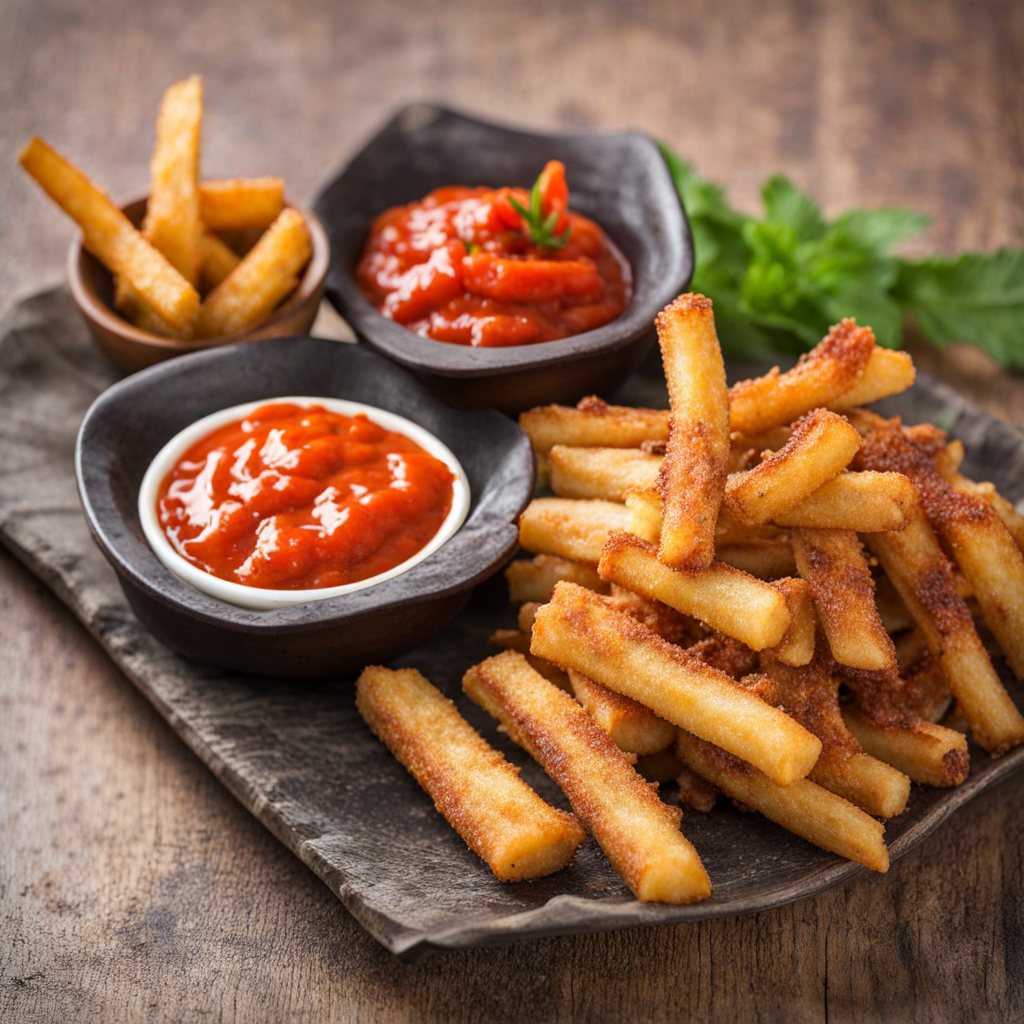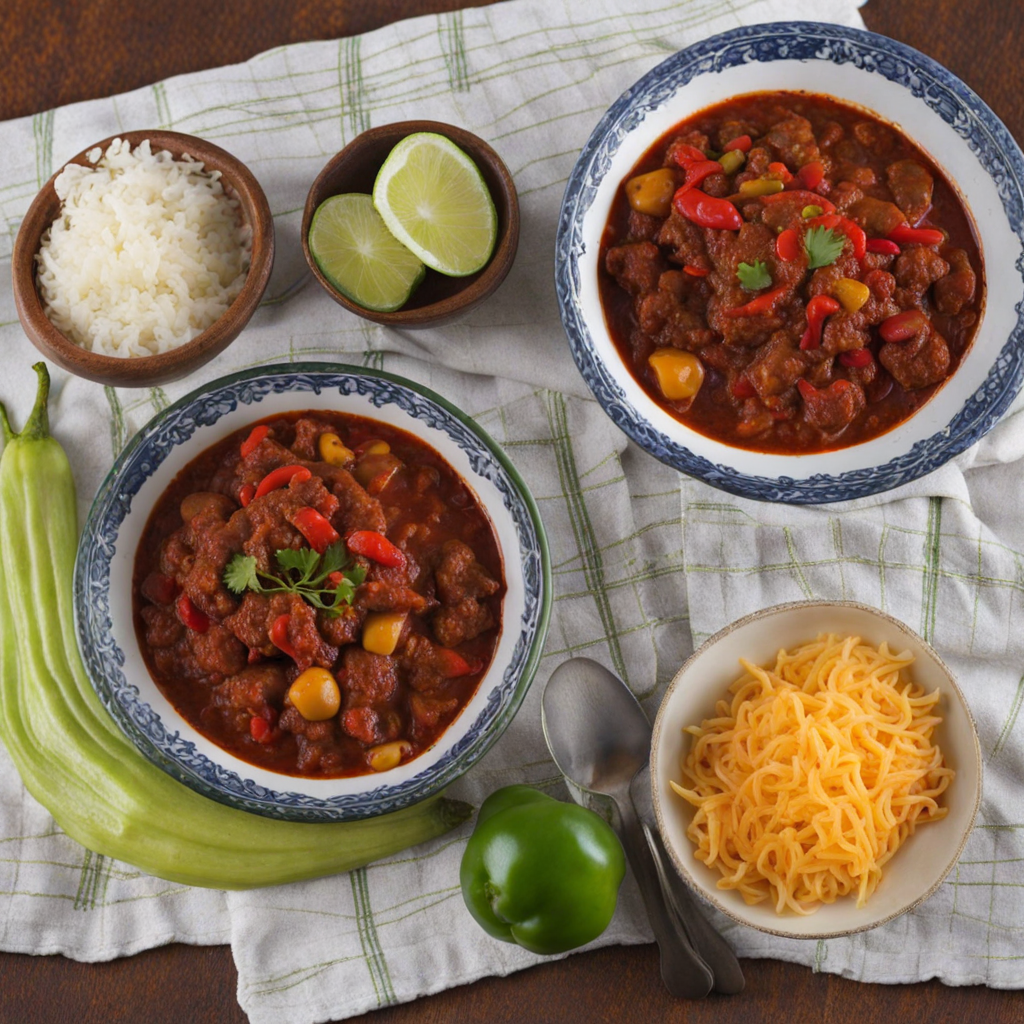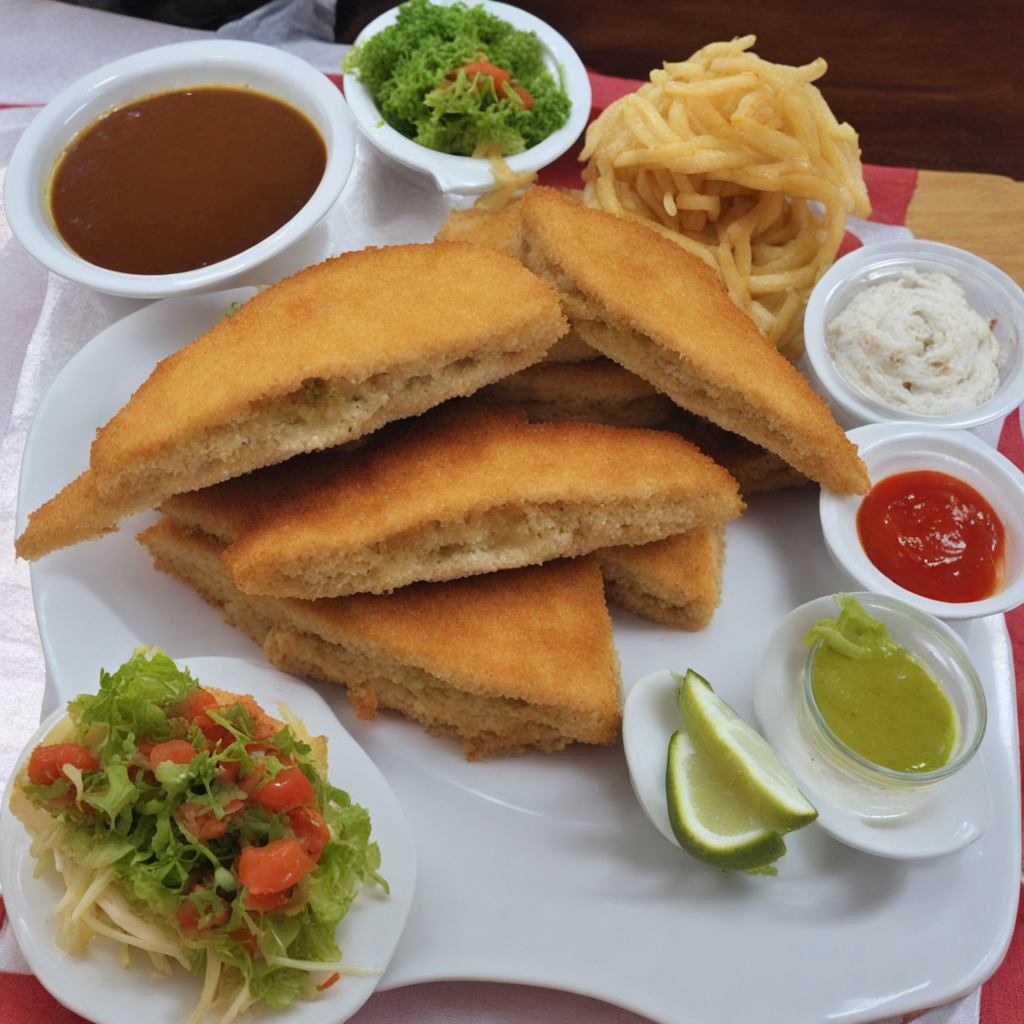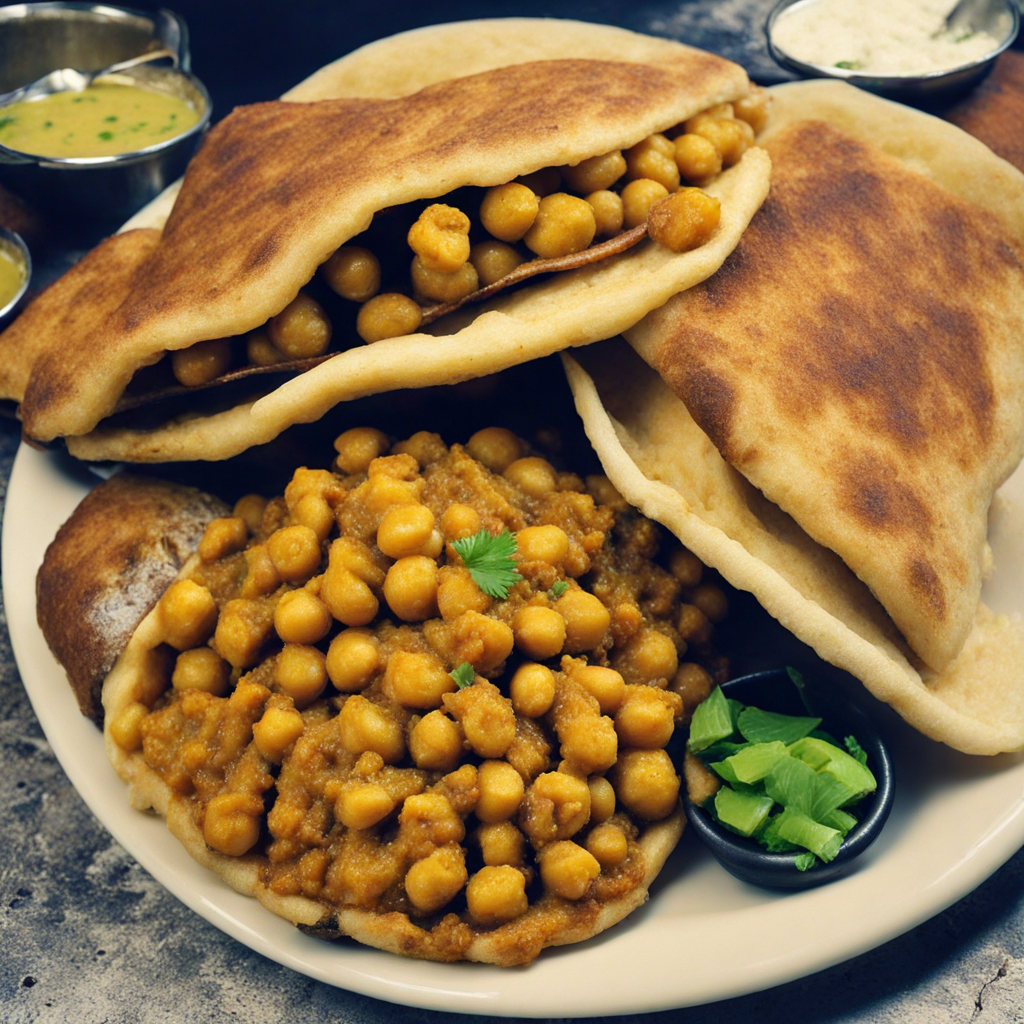Cassava Fries
Cassava fries are a delightful and unique culinary creation from Trinidad and Tobago that promises to tantalize your taste buds. Made from cassava, a starchy root vegetable also known as yuca, these fries offer a gluten-free alternative to traditional potato fries. The cassava is peeled, cut into sticks, and then fried to golden perfection, resulting in a crispy exterior that gives way to a soft, chewy interior. The natural sweetness of cassava shines through, making each bite a satisfying experience that is both comforting and intriguing. The preparation of cassava fries often involves a simple yet effective seasoning process, where they may be lightly salted or spiced with local herbs and spices. This enhances the inherent flavors of the cassava, allowing it to stand out as a star ingredient. Some variations might include dipping sauces, such as tangy mango chutney or garlic mayo, which complement the fries beautifully and add an extra layer of flavor. Each dip can transport you further into the culinary richness of Trinidad and Tobago, elevating the experience to new heights. Cassava fries are not just a delicious snack; they are a versatile side dish that pairs well with a variety of meals, from grilled meats to vibrant vegetable dishes. Their unique texture and flavor profile make them a popular choice for those looking to explore the diverse Caribbean cuisine. Enjoying cassava fries is more than just indulging in a tasty treat; it’s an invitation to immerse yourself in the vibrant culture and gastronomic traditions of Trinidad and Tobago, making it a must-try for any adventurous food lover.
How It Became This Dish
Cassava Fries: A Culinary Journey from Trinidad and Tobago Origins and Introduction to the Caribbean Cassava, also known as manioc or yuca, is a starchy root vegetable native to South America. It has been cultivated for thousands of years, with archaeological evidence suggesting its domestication as far back as 10,000 years ago. The indigenous peoples of the Amazon were among the first to recognize the tuber's potential, utilizing it as a staple food. When the Spanish and Portuguese colonizers began their conquests in the 15th and 16th centuries, they encountered cassava and quickly recognized its value. The introduction of cassava to the Caribbean is intrinsically tied to the transatlantic slave trade. Enslaved Africans brought to the Caribbean islands, including Trinidad and Tobago, not only carried their cultural practices but also their culinary traditions. Cassava, being a hardy crop that could thrive in poor soil and resist drought, became an essential food source for both enslaved and free people in the region. Its versatility allowed it to be used in various forms, from bread to porridge, and eventually, it emerged as a beloved ingredient for frying. Cultural Significance of Cassava in Trinidad and Tobago In Trinidad and Tobago, cassava holds significant cultural importance. The roots of cassava are rich in carbohydrates and provide a vital source of energy, making them a staple food for many communities. The process of preparing cassava traditionally involves peeling, washing, and grating the tuber, which is then either boiled, baked, or transformed into flour for various dishes. Cassava has played a role in the cuisine of both Afro-Trinidadian and Indo-Trinidadian communities, illustrating the blend of cultures that characterizes the islands. As a food item, cassava is often associated with family gatherings and community celebrations. Its preparation can be a communal activity, where families come together to process the tubers, share stories, and create a sense of unity. This collective spirit is reflected in the enjoyment of cassava fries, which have become a popular street food in Trinidad and Tobago, especially during festivals, fairs, and local markets. The Evolution of Cassava Fries The transformation of cassava into fries is a testament to the creativity and ingenuity of Trinidadian cooks. While frying cassava is not unique to Trinidad and Tobago, the local method of preparation has evolved to reflect regional tastes and culinary practices. Initially, cassava was boiled or ground into flour for various dishes, but the idea of frying the root came about as a way to create a crispy, flavorful snack. The process of making cassava fries begins with the selection of high-quality cassava roots. Once peeled and washed, the roots are cut into strips resembling traditional potato fries. They are then fried in hot oil until they achieve a golden-brown color, resulting in a crunchy exterior while maintaining a tender interior. The seasoning can vary, but common additions include salt, pepper, and sometimes garlic or spicy pepper, adding layers of flavor to the dish. One of the key elements that set cassava fries apart from their potato counterparts is their unique texture and taste. The natural sweetness of cassava, combined with its starchy consistency, creates a satisfying snack that can be enjoyed on its own or paired with sauces such as ketchup, garlic mayo, or even spicy pepper sauce. This distinct flavor profile has made cassava fries a beloved alternative to traditional French fries and a staple in the local fast-food culture. Cassava Fries in Modern Trinidadian Cuisine In recent years, the popularity of cassava fries has surged, not only within Trinidad and Tobago but also among the diaspora and food enthusiasts worldwide. This trend is part of a broader movement to embrace indigenous ingredients and traditional cooking methods, as people seek to reconnect with their culinary heritage. As globalization has brought diverse cuisines to the forefront, cassava fries have found their way into restaurants and food trucks, often featured on menus that celebrate local flavors. Chefs and food entrepreneurs are increasingly experimenting with cassava fries, incorporating them into various dishes. They may serve them alongside grilled meats, in wraps, or as part of a fusion dish that marries Caribbean flavors with international cuisines. The versatility of cassava fries makes them an exciting ingredient that can adapt to different culinary contexts while maintaining their roots in Trinidadian culture. Moreover, cassava is gluten-free, making cassava fries an appealing option for individuals with gluten sensitivities or those seeking healthier alternatives to traditional fried foods. This aspect of cassava has contributed to its rise in popularity among health-conscious eaters, further solidifying its place in contemporary cuisine. Cultural Preservation and Future Directions As cassava fries continue to gain recognition, there has been a collective effort in Trinidad and Tobago to preserve and promote traditional food practices. Local culinary events, festivals, and cooking classes often feature cassava, highlighting its historical significance and culinary versatility. This movement not only honors the past but also educates younger generations about the importance of indigenous ingredients and traditional cooking methods. Furthermore, the growth of social media and food blogging has played a pivotal role in elevating the profile of cassava fries. Food enthusiasts share recipes, cooking tips, and personal stories related to cassava, fostering a sense of community among those who appreciate the dish. This digital platform allows for the exchange of ideas and innovations, ensuring that cassava fries continue to evolve while remaining rooted in their cultural heritage. Conclusion The journey of cassava fries from their origins as a humble root vegetable to a cherished snack in Trinidad and Tobago encapsulates the rich tapestry of Caribbean culinary history. From the influences of indigenous peoples and African slaves to the fusion of cultures that define modern Trinidadian cuisine, cassava fries symbolize resilience, creativity, and community. As they continue to thrive in both local and global contexts, cassava fries stand as a testament to the enduring legacy of traditional foods and the vibrant culinary culture of Trinidad and Tobago.
You may like
Discover local flavors from Trinidad And Tobago







